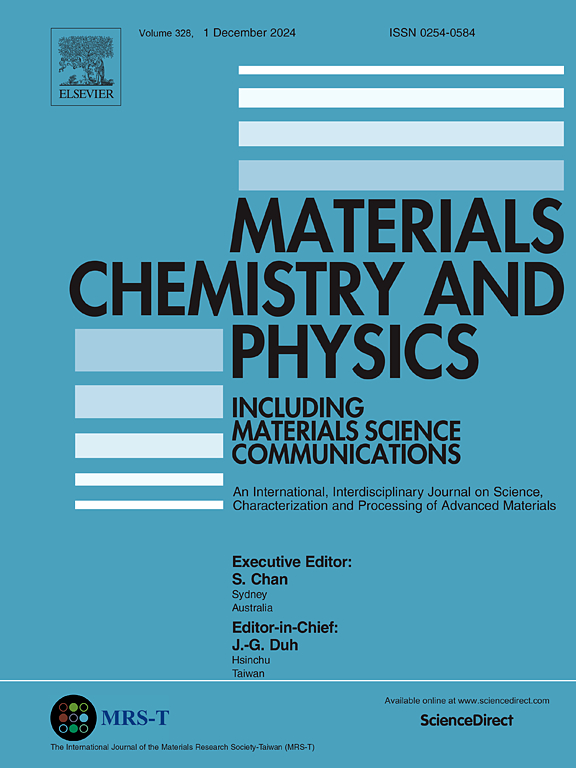以生物质水热炭化液为反应介质制备了含铁加氢催化剂
IF 4.3
3区 材料科学
Q2 MATERIALS SCIENCE, MULTIDISCIPLINARY
引用次数: 0
摘要
本文提出了一种新的单步合成方法,利用残生物质水热碳化(HTC)废液作为反应镭合成铁浸渍水炭。通过Fenton反应评价了fe修饰烃类对4-硝基苯酚(4-NP)的脱除效果。实验证明,加入HTC废液显著提高了氢炭的催化活性,特别是在250℃的HTC温度和0.5 M的金属盐浓度下。在后一种条件下合成的催化剂,4-NP的去除率达到了~ 88%,反应速率常数比在220℃的HTC温度下高17倍。表征证实了在碳氢化合物表面原位形成的磁铁矿(Fe3O4),提供了更好的热稳定性和磁性能,使催化剂能够回收和再利用。金属盐对铁的还原作用及其浸渍作用可能与废液中的生物分子有关,尤其是由麻疯树果皮HTC提取的废液。正如之前的研究报道的那样,这种单步浸渍法在HTC过程中形成磁铁矿相,而不需要热解后处理。这种节能和环境可持续的方法为HTC废液作为功能材料合成的可再生介质的潜力提供了有价值的见解。本文章由计算机程序翻译,如有差异,请以英文原文为准。

Fe-impregnated hydrochar catalysts prepared using liquor from hydrothermal carbonization of biomass as the reaction medium
This work presents a novel single-step approach for the synthesis of Fe-impregnated hydrochars using spent liquor from the hydrothermal carbonization (HTC) of residual biomass as a reaction radium. The resulting Fe-modified hydrochars were evaluated as catalysts for 4-nitrophenol (4-NP) removal via the Fenton reaction. Herein, it was demonstrated that incorporating HTC spent liquor significantly enhanced the hydrochar's catalytic activity, particularly at an HTC temperature of 250 °C with a 0.5 M metal-salt concentration. With the catalyst synthesized under these latter conditions, ∼88 % removal efficiency of 4-NP was achieved, including a reaction rate constant 17 times higher than at an HTC temperature of 220 °C. Characterization confirmed the in-situ formation of magnetite (Fe3O4) on the hydrochar surface, providing improved thermal stability and magnetic properties that enable catalyst recovery and reuse. The Fe reduction from the metal salt and subsequent impregnation may probably be attributed to the biomolecules in the spent liquor, especially in the liquor obtained from the HTC of Jatropha fruit husk. This single-step impregnation method forms the magnetite phase during HTC without requiring a post-pyrolysis treatment, as reported in previous studies. This energy-efficient and environmentally sustainable method provides valuable insights into the potential of HTC spent liquor as a renewable medium for functional material synthesis.
求助全文
通过发布文献求助,成功后即可免费获取论文全文。
去求助
来源期刊

Materials Chemistry and Physics
工程技术-材料科学:综合
CiteScore
8.70
自引率
4.30%
发文量
1515
审稿时长
69 days
期刊介绍:
Materials Chemistry and Physics is devoted to short communications, full-length research papers and feature articles on interrelationships among structure, properties, processing and performance of materials. The Editors welcome manuscripts on thin films, surface and interface science, materials degradation and reliability, metallurgy, semiconductors and optoelectronic materials, fine ceramics, magnetics, superconductors, specialty polymers, nano-materials and composite materials.
 求助内容:
求助内容: 应助结果提醒方式:
应助结果提醒方式:


